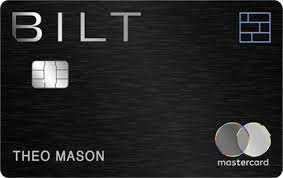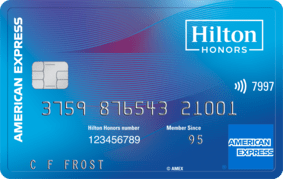Everyone loves the idea of travel hacking their way across the globe. Trouble is, many of the best travel rewards credit cards have annual fees of $95 or more, and most of us don’t love the idea of paying an annual fee to earn “free” travel. Fortunately, there are plenty of great no-annual-fee travel rewards credit cards.
These cards admittedly offer smaller welcome bonuses and are light on perks compared to premium cards, but they still offer tremendous value. Many of these cards even offer 0% APR for a brief period, which can be more valuable to some folks than bonus points and free hotel nights.
Here’s a look at some of the best travel credit cards on the market that come with no annual fee.
What’s Ahead:
- Overview: Best travel credit cards with no annual fee
- Bilt Rewards Mastercard®: Highest earning potential
- Discover it® Miles Card: Best welcome bonus
- Citi® Double Cash Card: Best for everyday spending
- United GatewaySM Credit Card: Best for airline miles
- Hilton Honors Card from American Express: Best for hotel points
- Blue Business® Plus Credit Card from American Express: Best business card
- Benefits and drawbacks of no-annual-fee cards
- Things to consider when looking for a no-fee travel card
- When is it worth paying an annual fee?
- The bottom line
Overview: Best travel credit cards with no annual fee
With so many no-annual-fee credit card options, it can be overwhelming trying to narrow down the best one. It really comes down to which card suits your personal needs. With that in mind, here are the best cards broken down by category:
- Highest earning potential: Bilt Rewards Mastercard®
- Best welcome bonus: Discover it® Miles Card
- Best for everyday spending: Citi® Double Cash Card
- Best for airline miles: United GatewaySM Credit Card
- Best for hotel points: Hilton Honors Card from American Express
- Best business card: Blue Business® Plus Credit Card from American Express
Bilt Rewards Mastercard®: Highest earning potential

The Bilt Rewards Mastercard® may not be as well-known as the other cards on this list, but it’s one of the best no-annual-fee cards for earning potential. The card has no welcome bonus, but it does have one unique feature: it earns points on rent payments. Depending on your monthly rent, the points you earn on this expense can far outweigh any welcome bonus — especially compared to other no-annual-fee cards.
The Bilt Rewards Mastercard® earns 3x points on dining, 2x on travel, and 1x on rent and all other purchases (up to 50,000 points per year). On the first of the month (dubbed “Rent Day”) rewards are doubled on all spending except rent. This can be pretty lucrative if you have an upcoming travel expense or group dinner. Even if you only use the card for your bills and shopping excursions, the 2x bonus will go a long way.
Bilt partners with 14 airlines and hotel loyalty programs that you can transfer your points to 1:1. Ten of these programs even overlap with Chase Ultimate Rewards®, including World of Hyatt, Flying Blue, and United, to name a few.
Pros:
- The only credit card that earns points on rent payments
- Competitive rewards program with 14 transfer partners
- Offers valuable travel and purchase protections
Cons:
- No welcome bonus
- Rewards on rent payments are limited to 50,000 points per year
- Must complete five transactions per month to earn points
Read our full review of the Bilt Rewards Mastercard®.
Discover it® Miles Card: Best welcome bonus
The Discover it® Miles Card has no welcome bonus but makes up for it by matching all of the miles you earn during the first year. This can be potentially lucrative for high spenders, as it equals 3 miles per $1 spent on all purchases without limits.
But don’t let the terminology fool you — despite being called “miles,” rewards are not transferable to airlines or hotels. Instead, the miles are valid for cash back redemptions. You would essentially earn 3% cash back during the first year of cardmembership.
You may be questioning whether this card even belongs on this list, given that you can’t transfer miles to airlines. The reason it’s so valuable is because of that double cash back match. Most travel rewards points are valued at 0.5-1.5 cents each. That amounts to earning 0.5-1.5% cash back on non-bonus spending. The Discover it Miles Card’s 1.5% earn rate is thus competitive and when doubled, it exceeds most travel rewards card.
The card has no annual fee or foreign transaction fees. Keep in mind, however, that while Discover cards are accepted almost everywhere in the United States, you may run into limited acceptance overseas.
Pros:
- Rewards earnings are matched during the first year
- Rewards can be used for travel purchases, Amazon, PayPal, or cash
- No foreign transaction fees
Cons:
- Rewards are not transferable to airlines or hotels
- Discover Match earnings don’t post until the end of the first year
- Discover cards may not be widely accepted abroad
Citi® Double Cash Card: Best for everyday spending
The Citi® Double Cash Card is a bit of a misnomer: it’s marketed as a 2% cash back card that earns 1% when you spend and 1% when you pay for it. In actuality, the card earns Citi ThankYou® rewards that can be redeemed for cash back or with 16 airline and hotel transfer partners. But this is even better than cash back since you can get more value from travel rewards than cash back.
For example, you can transfer just 15,000 ThankYou® points to Flying Blue for a one-way economy class ticket from New York to Istanbul. Considering the same ticket can cost over $1,000, redeeming ThankYou® points for this award is much better than using it for $150 cash back.
The Citi® Double Cash Card is an exceptional card if you want to earn valuable ThankYou® points without paying an annual fee or thinking about which bonus categories to maximize. If you want just one rewards card in your wallet, this one is a great choice.
Pros:
- Earns Citi ThankYou® rewards, which can be redeemed for cash back or transferred to airline and hotel transfer partners
- 0% intro for 18 months on Balance Transfers
Cons:
- No welcome bonus
- 3% foreign transaction fees
- The card only earns the full 2% cash back after you pay for those purchases
Read more: Citi® Double Cash Card vs. Chase Freedom Unlimited®: which is right for you?
Card info has been collected by MoneyUnder30 to help consumers better compare cards. The financial institution did not provide or approve card details.United GatewaySM Credit Card: Best for airline miles

Most no-annual-fee airline credit cards offer paltry welcome bonuses of around 10,000 miles. The United GatewaySM Credit Card is an anomaly, offering 30,000 bonus miles after spending $1,000 within three months of account opening. That’s enough miles for a round-trip domestic flight, though the exact mileage will vary depending on trip distance and demand.
Beyond the welcome bonus, the United GatewaySM card earns 2x miles on United purchases, gas stations, local transit, and commuting (including rideshare, taxis, train tickets, tolls, and mass transit). All other purchases earn 1 mile per $1 spent. These bonuses are substantial for a no-annual-fee card — most people will be able to maximize their daily spending with this card.
The card also provides a 25% discount on in-flight purchases and Club premium drinks and waived transaction fees on purchases made abroad. Cardmembers also get secondary rental collision coverage as well as trip cancellation and interruption insurance. The latter is unique for a card with no annual fee, especially since it provides up to $1,500 per person ($6,000 per trip) in reimbursement.
Pros:
- Generous category and welcome bonus for a no-annual-fee card
- Solid discount on in-flight purchases
- Trip cancellation/interruption insurance
Cons:
- No free checked bag benefit
- Card is subject to Chase’s 5/24 rule
Read more: Credit card miles vs. airline miles: Which is better?
Hilton Honors Card from American Express: Best for hotel points

For a no-annual-fee card, the Hilton Honors Card from American Express provides exceptional perks. The card earns 7x points at Hilton hotels; 5x points on dining, gas and groceries (in the U.S.); and 3x points on all other spending.
The card’s welcome bonus can be lucrative if you use it at low-tier properties. The card offers 80,000 points after you spend $1,000 within the first three months of cardmembership. Free nights at Hilton hotels start at 5,000 points, so the 80,000-point bonus can go a long way. However, if you’re looking to stock up for a free night at a top-tier Hilton hotel (which can go for 120,000 points or higher), then this card may not be a good fit for you.
Still, the Hilton Honors Card offers exceptional value for zero annual fee. The inclusion of waived foreign transaction fees is just icing on the cake. You can use the card on international trips without worrying about amassing extra fees.
Pros:
- Generous category bonuses
- Hilton Honors Silver elite status, with the ability to upgrade to Gold through card spending
- No foreign transaction fees
Cons:
- Welcome bonus is not enough for a top-tier award night
- Hilton Honors Silver status lacks meaningful benefits
- Hilton points are not as valuable as airline or bank rewards currencies
Read more: The best hotel credit cards
Blue Business® Plus Credit Card from American Express: Best business card
The Blue Business® Plus Credit Card is the best no-annual-fee business card you can get, thanks to a generous earn rate and excellent rewards program. The card earns 2 Membership Rewards® points per dollar spent on the first $50,000 each calendar year, then 1 point per $1 after. This works out great if you want a simple rewards card as opposed to one that requires you to track multiple category bonuses.
The Amex Membership Rewards® program offers flexibility and value, with 20 airline and hotel partners. If you max out the 2x earning cap yearly, you’ll have enough miles for a round-trip business class ticket to Europe with All Nippon Airways Mileage Club (88,000 miles). That’s just one example of how far your Membership Rewards® can take you.
The card offers 15,000 bonus points after you spend $3,000 within the first three months of cardmembership. That’s not a huge sum compared to other Amex cards, but it’s standard for a card with no annual fee. Another added bonus of having this card is that it gets you access to Amex Offers, which can help you earn even more points and statement credits on household bills and purchases with hundreds of popular retailers.
Pros:
- High earn rate on all spending
- Earns valuable Membership Rewards® points
- Cardmembers can take advantage of discounts and bonus points through Amex Offers
Cons:
- 2x earn rate is limited to the first $50,000 spent per year
- Welcome bonus is relatively low
Read more: Are Amex cards worth it?
Benefits and drawbacks of no-annual-fee cards
No-annual-fee cards are great if you want to earn rewards without worrying about getting your money’s worth. Many offer higher rewards on non-bonus spending categories, while others tack on travel perks normally reserved for premium credit cards.
When a card with an annual fee is no longer worth keeping, it can make sense to downgrade to a no-annual-fee version. You can preserve your credit line and avoid negatively impacting your credit.
Read more: 10 signs your credit card needs an upgrade (or a downgrade)
Some no-annual-fee cards also have lower credit score requirements than mid-tier and premium cards. So you could qualify for one more easily and even upgrade to a premium card down the line.
But a major drawback of no-annual-fee cards is that they offer lower welcome bonuses than cards that charge annual fees. Because of this, it often makes more sense to downgrade to one of these cards from a premium version than to waste a credit inquiry on a low bonus.
Read more: Best credit card sign-up bonus offers
Of course, this doesn’t apply in all scenarios. You might get value from the earn rate on a card like the Citi® Double Cash, in which case the lack of a welcome bonus shouldn’t deter you from applying for the card.
Things to consider when looking for a no-fee travel card
While no-annual-fee travel cards seem risk-free, they don’t make sense for every rewards strategy. You can lose out on valuable rewards and benefits if you’re not getting sufficient perks out of your card.
So, how do you decide if these cards are worthwhile? Here are a few things to consider when looking for a travel credit card with no annual fee:
Your travel goals
The most important thing to consider, regardless of the type of card you get, is whether it helps you meet your travel goals. If you’re looking to stock up on points for a first-class international flight, then the United Gateway Credit Card’s 30,000-mile welcome bonus probably won’t go very far.
The same goes for cash back rewards. If you want to save up extra cash for your travel bank, getting a Chase Sapphire Preferred® Card might be better than the Citi® Double Cash Card. You can convert your Sapphire Preferred® welcome bonus to cash at a rate of 1 cent each, totaling $600 from the welcome bonus. Meanwhile, the Citi® Double Cash Card has no welcome bonus.
Your travel goals should be at the forefront of your decision-making when choosing any credit card, let alone a no-fee travel card.
Read more: Best travel rewards credit cards
Your spending habits
After your travel goals, your spending habits should be the second biggest consideration when looking for a no-fee travel card.
How much you spend and on what determines whether you should stick to a card with no fee or splurge out on a premium card offering bonus points in those categories. Figure out how much those extra points are worth to you and whether they justify a higher annual fee.
Foreign transaction fees
Some no-annual-fee cards charge foreign transaction fees of 3-5%, making them less than ideal for travel abroad. Even if you take just one trip abroad every year, these fees can add up substantially.
If you spend more than $3,000 per trip, that can amount to $60-$150 in fees — on par with annual fees on mid-tier credit cards that waive foreign transaction fees.
Upgrading to one of these cards might make sense if it saves you money and gets you extra travel perks with a higher welcome bonus.
Read more: Best credit cards with no foreign transaction fees
Travel and purchase protection
There are exceptions, but most credit cards with no annual fee don’t offer very comprehensive travel and purchase protections. You want your purchases covered against theft and damage. And travel protection can save you thousands of dollars in case of cancellation or interruption.
While you can certainly buy insurance, you might be better off allocating those funds towards a credit card with an annual fee that offers these benefits.
Read more: Best credit cards with travel insurance
When is it worth paying an annual fee?
While no-annual-fee cards can provide tremendous value, paying an annual fee can be worth it, too. Rewards cards that charge annual fees also offer better benefits and higher spending categories.
For example, by upgrading from a no-fee Hilton Honors Card to a Hilton Honors Surpass®, you can get a slew of benefits that offset the $95 annual fee. You’ll earn higher bonus points in more spending categories, enjoy higher elite status perks, airport lounge access, and earn an annual free night when you spend $15,000 in a calendar year.
In this scenario, the benefits you receive by paying an annual fee are well worth it. But you should evaluate each card based on your own spending habits and travel goals. Travel perks are only valuable if you actually use them. Ultimately, whether a card is worth the annual fee depends on each person.
Read more: Is an annual fee credit card ever worth it?
The bottom line
The best credit card to earn travel rewards with no annual fee depends on what you’re looking for. If you want a card that helps you earn hotel points, the Hilton Honors Card is a solid pick. If you want airline miles without an annual fee, the United GatewaySM Credit Card is an excellent card that gets you access to a great frequent flyer program.
The Discover it® Miles Card is a winner for those who have substantial expenses and want to earn 3% in rewards during the first year. The Citi® Double Cash Card earns 2x Citi ThankYou® points on all spending, making it a great card if you want to earn valuable transferable rewards.
Small business owners will benefit from having the Blue Business® Plus card in their wallets — it has the same 2x earn rate as the Citi® Double Cash card but with a superior loyalty program and the ability to add employee cards without a fee.
Lastly, the Bilt Rewards Mastercard® is the best choice for renters or those looking to maximize point earnings on dining and travel (especially on the first of the month). The card certainly has its drawbacks and might not be for everyone, but it can go a long way in maximizing renters’ biggest living expenses.


